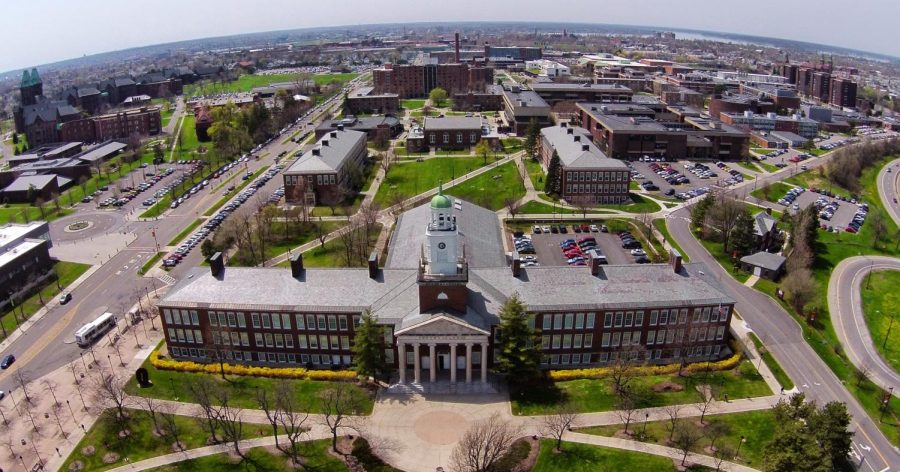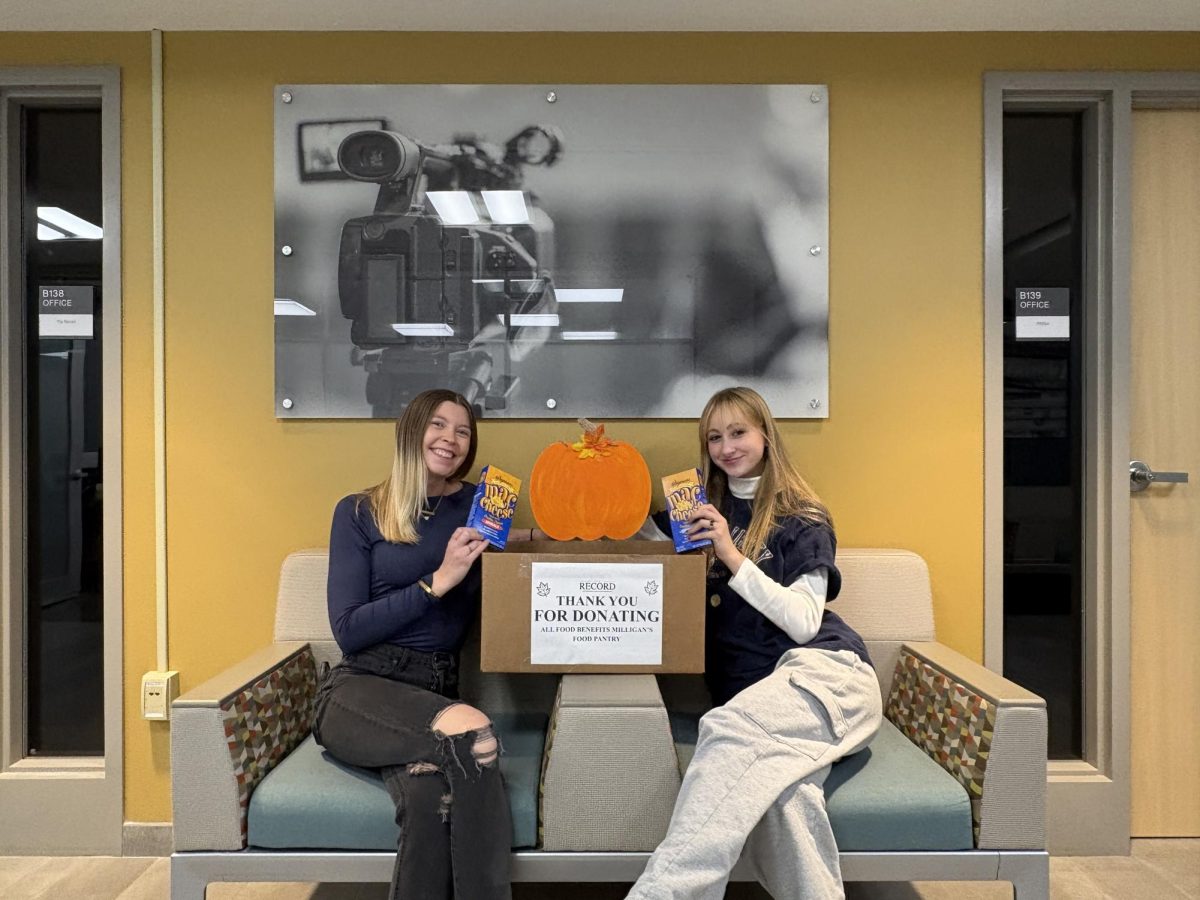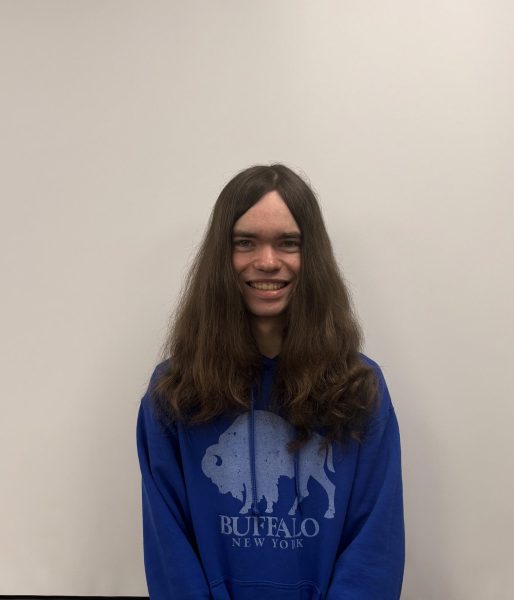An Interview with Dr. James Mayrose: An Unfiltered View in Higher Ed. Administration
April 21, 2023
In continuing my quest to explore the intricacies of higher education and to dispel misconceptions regarding administration in higher education as well as higher education as an institution, recently, I interviewed Dr. James Mayrose, the Provost/Vice President of Academic Affairs at Buffalo State University.
From a part-time instructor to the Provost/Vice President of Academic Affairs, Mayrose has worked extensively in the field of higher education. Mayrose provides a window into the world of Academic Affairs, the realm of higher education that primarily focuses on the academic-oriented elements of a higher education institution.
1) How might one define “Provost/Vice President of Academic Affairs?”
My position involves being second in command at the institution. Now, you’ve got the President and the Provost: the president is typically dealing with everything external to the institution, and that includes the partnerships, working with donors, things like that, that are externally facing and benefit the institution. She’s [the University President] out there talking about the mission, vision, the values, things like that. I’m, then, usually responsible for what happens internally to the institution. Again, my area is Academic Affairs. It’s a unique position when you because Provost and Vice President for Academic Affairs are two separate positions but it’s one title. So, when you really look at it, the Vice President for Academic Affairs is the one out there talking to faculty, figuring out what programs we can have, and what we can offer here. We’re trying to do some great stuff. The provost, on the other side, has to look at the day-to-day operations: the budget and the cost. On one hand, I might be saying this would be a great program, and I talk to faculty and see what we can do. Then, when I put my Provost hat on, I look at them and say: “how much does that cost? What is that doing? What can we really do?” A lot of times, there’s a struggle within the office trying to figure out the balance between the wonderful things you want to do, and how you’re paying for them. Many times, it’s a bit of a struggle. It’s the second in command at the institution, usually internal facing. I do have a lot of Partnerships and groups I deal with outside of the institution, but my role is mainly here on campus.
2) As the Provost/Vice President of Academic Affairs, what might your day typically entail in higher education?
It really changes every day. Before I leave today, I might take a look to see what’s on my calendar for tomorrow, but that can change. An emergency might come up that I need to deal with. So, that changes my whole schedule. Most of my day is meetings with the Deans around me, with individual groups, faculty staff, and students. I also meet with Department chairs. We basically talk about everything under the sun: we can be talking about specific curriculum, we can talk about issues, or there may be questions that students have, and faculty and staff concerns. So, I have to work on all of that. But I do also get to go to all of the wonderful celebrations we have. I was just at the twenty five year celebration. We had 26 people that have been here for 25 years, and we give awards and I get to talk to them about their experience over 25 years of being here. It’s interesting, going to ceremonies like award ceremonies for faculty, staff, and students. It’s fantastic. Commencement is the best, the great day we look forward to.
So, It’s not all business: I do get to do a lot of those fun activities. That’s the exciting part: to celebrate all the achievements of faculty, staff, and students. It’s wonderful! Day-to-day, there are a lot of meetings. It can be tough because I go through all these meetings, and at the end of the day, look at all of the notes I took during those meetings. Now, I have to put them into some kind of format that can allow me to start to get that work done. It’s a lot of hours of planning and trying to get the right people at the table. So, you can say: “All right, I have this meeting over here; we now need a solution.” We have to talk to these people over here, trying to come up with something and then implement it. There’s not a lot of time to actually do; it’s a lot of talking. But, when it comes to actually doing the things, I have a wonderful team of people around me. I’ve got all my team here in this office [Academic Affairs office], and the faculty step up to help. That’s the thing, I think, students don’t realize: faculty step up to do a lot. Most faculty and staff do a lot more than just their day job, whatever they’re hired to do here. They [the faculty] do a lot more, they’re involved. So, when I need help, that’s where I go. So, sometimes I’ll ask someone: “Hey, I’ve got this project. Would you care to help me?” Many times, most of the time, people say yes. It’s something that, I think, students should be aware of as faculty. do much more than teach in the classroom.
Dr. Mayrose also added that day-to-day tasks may involve communication flow, strategic planning, evaluation of teaching faculty, scheduling, budgeting, curriculum programming, planning and assessment, relationship building with community partners, and completion of annual evaluations and reports. It is important to note Dr. Mayrose is also responsible for appointing, selecting, and evaluating Academic Affairs personnel.
3) As the Provost/Vice President of Academic Affairs, what responsibilities does the position require?
It’s really exciting, and people may ask: “do you get bored?” There is no way you can get bored doing this job, you can’t! There’s so much involved, and that’s what keeps it exciting. And there are different levels of priority: I have to prioritize.
“The positions of Provost and Vice President for Academic Affairs are distinct and, at times, have conflicting responsibilities. The Vice President for Academic Affairs has the responsibility to promote and maintain a distinctive academic vision, with primary responsibility for planning. implementing, and coordinating the educational programs of the institution. By contrast, the provost’s role is to ensure that the day-to-day administrative and support operations of campus run smoothly. The provost is responsible for the creation and implementation of the academic priorities for the institution as well as ensuring the quality of its educational programs. In addition, the provost is responsible for the allocation of resources to support those priorities and perhaps most importantly to ensure that the institution is able to recruit, retain, and mentor an outstanding faculty. Though related, performing both roles requires balance.”
4) Why did you choose to assume the position of Provost/Vice President of Academic Affairs?
I had to take a step back and ask what led me here because you don’t get trained to do this. I started as a faculty member, I was in industry, and I had taught as part time or instructor, but
this position opened up and I really wanted to make a change in my career: I would love to be in the classroom teaching and be a professor. I started doing that, and then I started to get involved, like every other faculty member. We did a bunch of things and opportunities started to arrive like being the chair of the department: I thought, wow, I could really see what everybody else is doing and you’ve got some budgeting that you have to do, lots of different things. So, I became a chair. Then, after that, there was a position open for the Dean. I figured well, let me take a look because as Dean you get to step out of your department, and you get to work with all of the departments in that school. I’m an engineer, and so, learning about all of the other faculty that are in all the other majors in that school seemed fantastic. So, I was able to get that job and then I had other positions. I’ve been the interim CIO and Vice President for
Enrollment, Marketing, and Communication. I did that for a year and learned a ton because that’s not from the faculty perspective, that’s coming at it from the other side: that’s a support side area for the institution and the learning I was able to do there was amazing. Then, this position opened up, and I applied, and I got it. And this is amazing because now, I get to work with every school, every department, every program, all faculty and staff and students. It’s wonderful: the perspective you get, and the things you learn as you go to me was amazing. That’s the part that I looked at and realized that inspired me to come in every day and do the best I can for all of those people. But I do miss being in the classroom, I do miss it.
5) Every semester, students are requested to complete course evaluation surveys for each professor. Where does this information go? How does the information influence decision- making related to academic affairs?
This is a very good question because students don’t always know what we do. I can give you my example: students would evaluate the course at the end of the semester, I would get those results, and a copy would go to my department chair. I would take a look at those results. And some of the questions I had online were about the student learning outcomes. It’s on a Likert scale, 1 to 5 and you’d get that average for each one of those. And most of the time, if you’re in between a 4 and a 5: You’re looking at that saying I’m doing pretty well; students feel like they’re really learning you, but there was one where I had like a 3.5 and I said it’s the only outlier that’s not above four. So, I took a look at how I was teaching the course and my syllabus and really focused on that one area where it looked like students didn’t really feel like they were learning. So, I changed my course. The next time I taught it, when I got the results back, they were all about four. That enabled me to say: all right, this is what I heard from students, this is how they feel about this topic, and they did not really learn the topic well, so I was able to use those to change it. That’s really what they’re [the evaluations] for. They are for the faculty member to take a look at their course and how they’re presenting it to students and use that feedback to revise it right as they see fit.
6) What might you consider to be the most pressing issues affecting the academic success of students in an institution of higher learning?
There’s a lot. First, finance is always a problem, and a number of students struggle semester to semester to figure out how they’re going to end up, and they’re doing well; it’s the finances that keep them from coming back sometimes. And mental health is a big issue: COVID-19 exacerbated that. We’ve always had issues, but with more and more people, it’s coming out that it was a struggle for a lot of people, and learning in that environment was difficult for people. Also, “fitting in” is an issue, and we try to figure out what we can do on campus to make this really like a family in a community to get people to understand, and for faculty and staff as well: how we can make this our family in our community. You’ll hear us talk all the time about the Buff State family. What does a family do? They look out for one another, help one another whenever you can and these are the things when it comes to mental health, we have a lot of support on campus for that. And that’s what we continue to do is to find what is it that people need and provide those services for them. So, Student Affairs does a great job with students and providing the services they need. But there’s a lot of things we have, [like] the Milligan’s food pantry. We’ve had it for years but didn’t realize how important it was. It got more and more important. So, you may see people holding events to ask when you come to the event, bring a can of something. We see more and more of that on campus to keep the food pantry packed because we know that students really need it and use it. We start donating a lot, faculty on campus donate money and donate food to it. If we didn’t hear about that, if we didn’t know that students are struggling, that would never happen. So, it continued to be supported like that. There’s a lot of things and, and it’s unique to each individual. At any point in time, through the students’ college career, they will experience something where they feel like they don’t fit in or they’re dealing with stress, mental health issues, or food insecurity or finance, all of those at some point in time. We do have a number of students that experience every one of them. And that can be difficult for them, and we try to provide as much support as we possibly can.
7) If one day you awoke and were notified that you were to teach a class at Buffalo State University, what course would you hope that is, and why?
I would hope to teach Thermodynamics again. Thermodynamics lies at the very heart of all aspects of engineering and is one of the most advanced tools for understanding our physical universe. The satisfaction I feel when I know that I had an impact on students, that I helped them to learn something or to figure something out, or to get them excited about a concept or a problem is indescribable. I look forward to teaching Thermodynamics and other topics in engineering again in the future.




